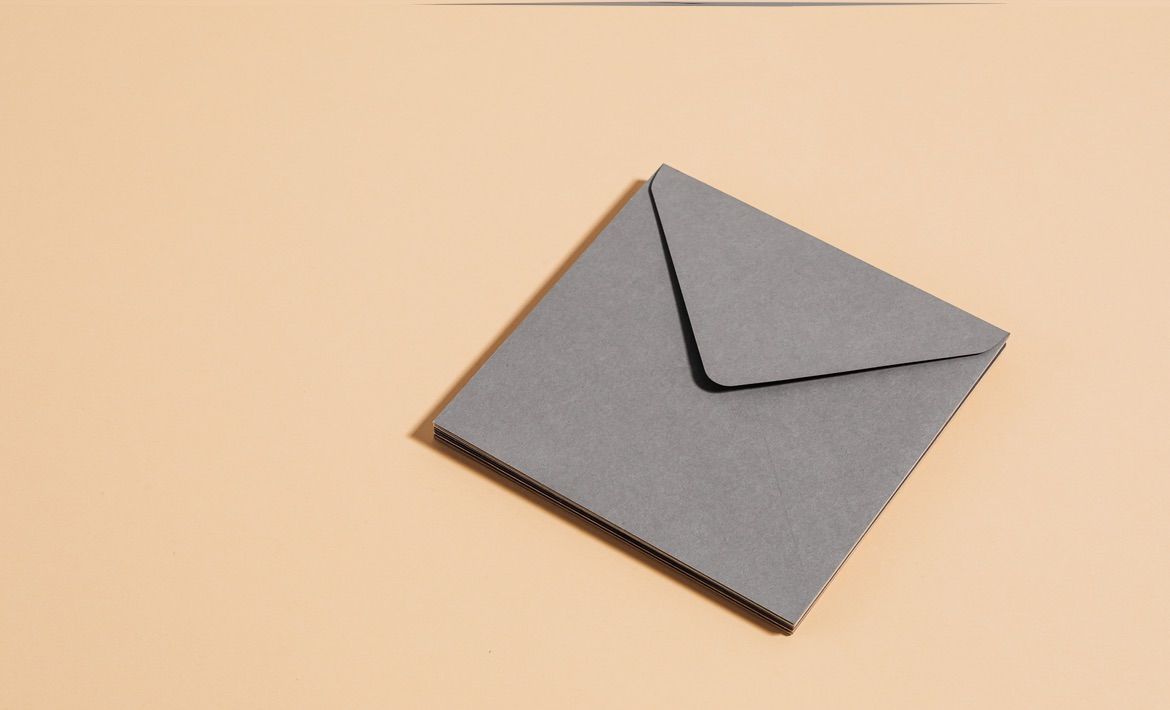As a public relations manager, there’s no tougher audience than a journalist.
That could be it; the end of the article. I could happily go on to write another article about how sales automation can save your business, alas I won’t. It’s important that we address getting our pitch right, so when launching a product, we get the media coverage it deserves. As a community, we need to develop a culture of sharing hints, tips, and experience we need to win those all important publications. If we can teach each other how to think like journalists… that’s priceless.
Bill Gates once said "if I was down to my last dollar, I’d spend it on Public Relations". I think it’s fair to say… Bill Gates knows a thing or two about business.
What do you want from a PR campaign, and does it align with what the journalist wants?
Firstly, let’s set out the goals you want to score from your PR campaign. Most likely, they’re increased website traffic, strong backlinks, new customers through your door, and increased brand awareness. Yeah, great, wow, amazing... but journalists don’t care about any of these things.
So what do journalists care about? They care about exclusive content, engagement, and an article going viral. Ask yourself, is a listicle titled ‘Top 8 Biscuit Bakeries in the Northern Hemisphere’ interesting for a journalist? Well, you might catch the odd sweet-toothed one out… but generally, no. They’re under pressure to generate clicks and views, so your story needs to stand out from the white background noise. Oh and by the way, that white noise is constantly getting louder.
We don’t need to bang on about the fact we need to be selective about our journalists; 80% of publishers decline a pitch because of its irrelevance. Don’t pitch your biscuit listicle to a hardware review website. Carefully study which topics a journalist covers and find a gap in their content for you to fill.
How can you establish a meaningful relationship with a journalist?
Before sending your first pitch, get to know the people who you’d like to closer reach out to. There’s no easy way to build a credible media relationship, and the competition for any one journalist’s time is fierce. There’s no way around it. Instead, the quicker we can learn how to win attention effectively, the better. Here are some short tips that’ll go a long way to bridging the gap between you and a journalist.
Respect them as people
How does it feel when an old classmate reaches out to you, not to reconnect, but to get that sweet staff discount from the store you work at? Yeah, that. The same feeling applies for a journalist who opens an email to see the first thing is that you want something from them. Selfish is the first word that springs to mind.
Play the long game; take baby steps. Each interaction and every conversation should gradually build upon the previous one, until you’ve opened a clear and easy-flowing communication channel. Only then can you achieve consistent, positive results with a publisher.
Share and engage with their content
Most media people are active on their socials, especially Twitter. Follow them, share their content, compliment their work, and generally engage with them. If you have anything meaningful to add, don’t be afraid to comment on it. Go even further and make yourself an unofficial distributor of a journalist’s work; share their stories on your company social media profiles and include them in your weekly newsletter or in the news section of their website. They want exposure; give it to them.
The State of Journalist Report 2020 reported that 75% of journalists like it when you follow them up on social media. So when you send that first email to a journalist, your recent conversation should be fresh in their mind with your name ringing bells in their head. Use Twitter to build a relationship, then make your pitch over email.
Be sincere and do not show fake appreciation. A journalist is a master of words, and they’ll sniff insincerity out in an instant. Likewise, don’t overdo the compliments; nobody likes a creep.
Offer your resources
After following a journalist, becoming privy to their content, and knowing what they’re all about, you should share your own knowledge with them. If you see their article and think you have the perfect third-party resource where they can share it, don’t be afraid to suggest it. Just make sure the resource isn’t related to your own company as you might come across as insincere.
Another way to reach out is to offer feedback for a piece that has particularly resonated with you. For example, if a journalist specialises in product reviews, offer your feedback on the product that they have reviewed.
Give more; take less.
The anatomy of a perfect pitch email
Once you’ve selected relevant media and journalists for your industry, connected with them on social media, carefully examined the topics they’ve covered, checked out their writing style, and found out at least a little bit about them as a person, it’s finally time to craft your pitch. Let’s dive into what makes a successful pitch; an alluring subject line, a compelling story, and a clear, punchy CTA.
The alluring subject line
The one thing that a subject line needs to do is get your recipient to open your email. On average, journalists receive around 200 pitches every day. That means you need to stand out. A boring "I’d like to contribute to your blog"or "I'd ike to submit an exclusive story" just isn’t enough.
In general, your email subject line should be a comprehensive summary of the story. It needs to be both catchy and meaningful. Be versatile and make sure it’s short enough so it can be read on a mobile phone. Make it between 6-8 words.
Here are a few tips for getting your email opened
- Personalise it. Adding the recipient’s name is a psychological hook for them, making them pay attention.
"Mary, I have the perfect person for your interview series"
Obviously, make sure you spell their name right...
Would it be rude to reply to every PR pitch with “Its Jon not John” ?
— Jon Hansen (@JonHansenTV) June 11, 2020

- Use numbers. Firstly, this shows that you specifically know what you’re going to write about. Secondly, you leave an expert impression on a recipient.
"4 Approaches for SMBs to Shorten the Adoption Period of their Tech"
- Include locale in a subject line when pitching to local media. You can even experiment with an emoji. If you’re pitching something Ukraine-specific, why not include the Ukrainian flag in there?
"🇺🇦We got 220k installs/ month as a fitness app on Ukraine’s Play Store."
Some journalists request pitched ideas to specify that they are pitched ideas in the subject line. In this case, simply start your subject line with "Story Idea:.." and then get creative. All-in-all, look at the titles that the journalist or the media you are pitching to use, and stick to their writing style.
The compelling body
The subject line isn’t the end of your personalisation journey. The introduction to your email also needs to be person-specific, and you should start your story by relating it to who you are writing it to. Also, get straight to the point. If you think you’re being rude by doing this, don’t. A journalist is a busy person, and they’ll appreciate your directness.
"We surveyed more than 1000 B2B sales experts to see how they feel the effectiveness of sales automation. 75% of them saw notable benefits".
"We have just raised 16M total funds to make sales people more productive".
"Hello Josh, I read your recent story about leveraging AI to optimize customer service outcomes and I know a European startup that is using this approach. The results they have achieved are impressive".
After that, give a brief synopsis of your idea, provide details about why you believe it’s an interesting article for their particular readership. Highlight first-party resources that you have used, such as interviews or secondary studies that you plan to reference.
MuckRack states that the ideal length of an email pitch is around 150 words. If you can adequately explain your article in less, perfect. If more, you need to re-read your pitch again and define which parts are absolutely essential and which are not. Formalities such as "I hope this email finds you well" are redundant.
You should also make your email visually appealing by following these formatting tips.
- Put the most important information at the top, whilst moving personal interactions to the latter part of the email.
- Keep paragraphs short and add some white space for clarity.
- Highlight the most important words in bold.
- Use bullet points, where applicable.
- If you have a press release, a video, or pictures, include them as a link rather than inserting them into the email.
Finally, if you want to attach supporting documents, make sure the files aren’t too large, are easy to access, and readable across every operating system.
A clear, punchy CTA
So you’ve got your email opened, read, and your recipient is on the line. You need to reel them in by setting a clear next step they need to take after reading your email. Don’t leave any room for guessing; state clearly what you want the journalist to do after reading your pitch.
Don’t leave it with a generic "looking forward to hearing from you soon". Be specific, proactive, and offer a clear next step.
There is no single CTA that I can offer in this article to get your media accepted. Depending on whether you’re pitching a company story, a product release, or some research, your final sentences are going to be completely different.
"Shall I send you the research?"
"Can I arrange an interview with our CEO?"
"Shall I send you the credentials to get the early access to the updated version of our product?"
Be useful; don’t end your pitch like this.
"I’ll email you tomorrow just in case you got busy and forgot to respond." Possibly the most menacing way to end an unsolicited PR pitch.
— Jessica Hullinger (@JessHullinger) June 30, 2020
Wait! Don’t forget to follow up
55% of journalists say it’s okay for them to receive one follow-up on an unanswered pitch.
If you really, truly believe in your story and are confident that your knowledge can help journalists gain the exposure they so desperately crave, don’t forget to follow up. One simple message can turn your perceived failure into a success. A follow up is always worth a shot. Your email might simply have been lost, maybe you just sent it at the wrong time, you didn’t get your subject line right, or you might have simply slipped their mind.
Want to know what the inbox of an editor looks like? For the first time ever, I received more than 10,000 emails in a month. That's one email every 4 minutes and about 20% more than in January 2020. pic.twitter.com/09q4y6Tgan
— Désiré Athow (@desireathow) August 3, 2020
Still, before sending a follow up, it’s encouraged to make sure that your first email was read. If not, it might be enough to simply update your subject line to something a little punchier.
One follow-up strategy is to be short and sweet, without adding any details to your pitch. In this case, your only aim is to catch the eye of a journalist.
"Hi Bob, bumping this to the top of your inbox.".
Another option is to follow up and add more value to your original message. You can offer exclusive content that wasn’t stated in your original message such as first-party research data, a customer testimonial, or a technical description of your product.
"Hi Bob, I would like to share a few supportive materials that will make my story more exclusive. This is first-hand research we conducted on sales automation, having asked more than 1000 sales experts."
If you don't get a reply from your follow-up, don’t sweat it. Move on. Your story might just not be relevant for a journalist at that particular time. Remember it, and send another pitch when you’ve developed something more relevant for them.

If you do get a response and your story goes live, well done! Don’t forget to thank the journalist for making it happen. Go that extra mile, and help their story get more exposure by sharing it across your social media channels.
Phew… done.
But we’ll be back. PR is challenging, and one article isn’t enough to get your content consistently published. It’s an ongoing learning curve, and it absolutely does not end with your pitch. It’s all about relationships, communication, value, and timeliness.
Oh, and make sure you always have an elevator pitch ready, who knows when you have to hard-sell yourself and your PR story in under 30 seconds?
Good luck, and go get ‘em champ.
Table of Contents
Crack the sales formula with CRM Lab
Twice a month, receive actionable CRM content to your inbox.



